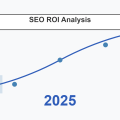It should be safe to assume that your business website contains images; if it doesn’t, then the question has to be, ‘Why not?’. Images are a great way to engage with, inform and entertain customers, but what many website owners don’t realize is that images can also play a role in onsite SEO. More importantly, there are some simple steps you can take about the images on your website that can boost your site’s ranking in the eyes of Google.
In hindsight, using the term ‘eyes of Google’ might be a tad misleading because, despite all their top-level programming and sophisticated algorithm updates, Google cannot see the images on a website as human eyes see them. Their spiders which crawl the internet and analyse websites, can only recognise text. This means that no matter how colourful, large, exciting, or high-quality any website image is, Google will not see that.
This means that for Google to know that your images are relevant to your website’s content and subject matter, you need to add something called ‘alt text’.
For example, if you had a website selling sports shoe products, one of those products was Nike Air Jordan 14 Retro, you would likely have a page for this product and an image of them. When you upload the image, you will enter alt text such as ‘Air Jordan 14 Retro Sports Shoes’. Now, when Google’s spiders come calling, they will be able to read that text, and therefore the page gets more ranking juice for that keyword phrase.
If your website is built using a WordPress theme, then any time you upload an image to be used, there will be a box where you can add the alt text for the image. Other website platforms will have their own means to add alt text, even if it is simply part of the HTML code used to build the site.
Another way to help Google recognise what the images on your site relate to is to name the image files you upload to your site appropriately. Often, images are sourced from royalty-free image sites, and when they are downloaded for use, they have file names like img435xyd45.jpg.
In cases like this, you should rename the file to a keyword phrase related to your website’s content. Ideally, you want to rename the file the same as the alt text you will use, so in the case of our sports shoe example, the file could be renamed air-jordan-14-retro-sports-shoes.jpg. You will note using hyphens to separate words to make it easier for Google to recognise both the file name and the specific words.
When you add images to your website, where possible you should use a related keyword phrase for the image title too. The image title is not the same as the alt text or file name. Instead, it is a tag that forms part of the HTML code of the web page. Whenever visitors to your site hover their mouse arrow over the image, a little text box will appear with the image title you entered. Again, this is the text which Google will recognise when crawling your site, so it can further enhance your SEO.
One final SEO trick you can use about images is the anchor text for any links to that page. You will often see anchor text that reads ‘click here to view’, click to reveal image’. These serve no SEO purpose whatsoever. What you should use instead is ‘Click to see Nike Sports Shoes’, or ‘Nike Jordan 14 Retro’. Google reads these links and the anchor used by them to determine their relevancy. Using a keyword relating to your website can boost those terms as long as it is not over-used.









